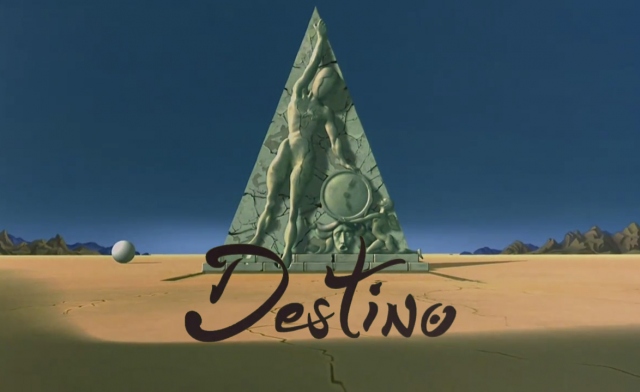Destino (2003 Short Film) Review
April 1, 2016
My next look at the Disney animated short films library is Destino. Destino, as mentioned in my Lorenzo review, was a segment intended to be featured in Fantasia 2006. After watching Destino, I think it was a mistake for Disney to not make Fantasia 2006. Destino shows the potential that the past short films I’ve reviewed show. Destino is possibly one of the greatest pieces of art I’ve ever had the pleasure of watching.
Destino’s humble beginnings started in late 1945 when Walt Disney and Salvador Dali decided to collaborate. The short was called Destino (Spanish for “destiny”). Disney Studio artist John Hench worked on the storyboards for the project while he and Dali both wrote the story. Dali had also worked on several conceptual pieces for the short exclusively. Not long after the short started development, it was plagued with financial troubles due to World War II. Only 17 seconds of test animation was completed in hopes of reviving the studio’s interest in the project. Despite these attempts, it was not deemed financially viable, and the project was shelved.
In 1999, Walt Disney’s nephew Roy E. Disney discovered the project while working on Fantasia 2000, and he decided to revive it. Destino was given to Disney’s other animation studio, Disney Studios France to be completed. The short was directed by French animator Dominique Monfery (making his directorial debut), and it was produced by Baker Bloodworth. The production consisted of a team of 25 animators who deciphered Dali and Hench’s original storyboards. They also had help from journals that belonged to Dali’s wife, Gala Dali. The production also received guidance from Hench himself. The end result was a short that consisted mostly of traditional animation, including Hench’s original footage with a subtle amount of computer animation.
Destino’s story is kind of hard to describe due to it being so ‘art heavy’, meaning that this short is filled with so many striking visuals that it’s kind of difficult to tell what’s going on at times. According to other sources, Destino is a love story. It tells the story of Chronos (not to be confused with the Greek titan Cronus), a character who is similar to Father Time. Chronos is the personification of Time in pre-Socratic philosophy and later literature. Chronos falls in love with a mortal woman named Dahlia. As the short progresses, we see the two dance through visuals inspired by Dali’s work.
Destino is incredible. This is one of my favorite pieces of animation, art, and it is possibly my favorite short film in the Disney library. The animation is incredible. It’s some of the best I’ve ever seen, and it captures Dali’s surreal art style. The visuals blend so well with the animation of the characters. The imagery is some of the most creative I’ve ever seen from an animated short film. The music was written by Mexican songwriter Armando Dominguez and performed by Dora Luz, and it is beautifully performed. It’s so soothing, yet when watching the film together with the music it kind of has a somber tone to it. It is a great piece of art that I can’t praise enough. The film is so detailed, it’s so creative, it’s so deep, and it’s just so good. Unfortunately, Disney didn’t put this short on the Walt Disney Short Films Collection, but they did put it on the Fantasia/Fantasia 2000 Limited Edition Blu-ray. But fear not, the short was also released on Youtube in its entirety.
I wish Disney would do more experimental shorts like these. They’re so creative and well-made. I would love to see more experimental projects with this much dedication and passion put into future shorts – or possibly a full-length feature film. What else can I say but give it a watch and prepare for your destino.





